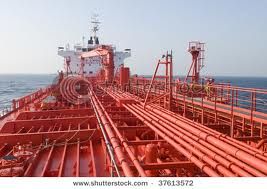
The phrase, “It seemed like a good idea at the time,” seems to be associated with a lot of miscues. We would not have industry and economic cycles without it. How so?
If you ever have been involved in the planning process for anything, you know you cannot propose adding capacity during a downturn; back when copper prices were trapped below $0.90 per pound between 1997 and 2003, how many new mining projects were proposed and approved? Far fewer than in recent years when prices moved northward of $4.00 per pound, would be my answer.
Lost in this rush to buy high and sell low is recognition others are doing the same thing at the same time. The lack of investment creates the next price surge and the wave of investment creates the next price collapse. This may be Game Theory 101, but it drives industries ranging from chemicals to steel to telecommunications.
Oil Tankers
If we add this boom-and-bust cycle to an industry with very inelastic supply curves such as crude oil tankers, we see a boom-and-bust stock cycle. The Bloomberg index of tankers, which includes Frontline (FRO), General Maritime (GMR), Nordic American Tankers (NAT), Overseas Shipholding (OSG), Teekay (TNK) and Tsakos Energy Navigation (TNP), has alternatively outperformed and underperformed the MSCI-Barra World index by wide margins since the first declaration of war on deflation in May 2003. Such price volatility always results from inelasticities; a small change in the number of tankers available can have an inordinate impact on the tariffs they can charge.
Please note the decline in the tanker index’ returns over the past year; these correspond to a period of oversupply of vessels bidding for cargoes being nominated in the Persian Gulf. This excess capacity currently stands at 14% according to industry estimates.
Interestingly, while the key Persian Gulf to Japan tariff has remained below the Worldscale 100 or 100% of expected rate for much of this relative stock market weakness, it really has not collapsed. The situation is vessels are getting paid enough to sail when they have a cargo, but they just do not have enough cargoes to soak up the capacity available.
During a similar early 1980s tanker glut older vessels were sent to ship-breaking yards to be sold for scrap. They had no other use at that point. The situation is different now, with the difference rising from the presence of futures markets. A tanker can be filled with crude oil and hedged by selling futures forward when the market is in a contango sufficient to cover the vessel’s costs. These vessels represent floating inventory and can represent a significant portion of world demand, up to a month by some estimates, when conditions allow.
This is one of the benefits of futures markets regulators seem to overlook when decrying “speculation.” Of course, I am sure the same people will point to the vessels parked offshore – parking them onshore is more difficult than it sounds – and scream some nonsense about them “waiting for the price to go up.” This, too, goes in a cycle.
Source: Minyanville
We use cookies to improve your experience. By continuing to use our site, you accept our Cookies, Privacy Policy,Terms and Conditions. Close X